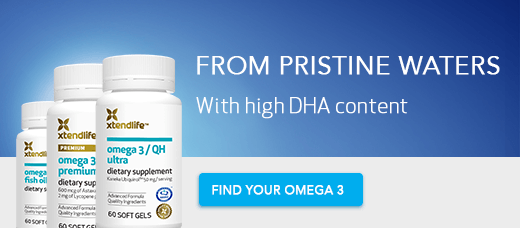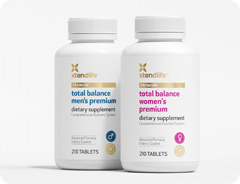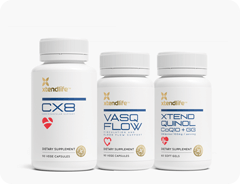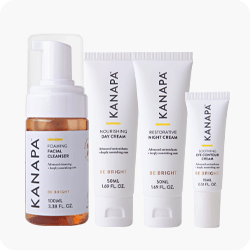It’s a well-known fact that Omega-3 fatty acids are helpful for blood pressure, but not all omega-3 fatty acids are equally effective. Fish always beats flax every time - and throughout this post, I hope to show you why.
According to the Centers for Disease Control and Prevention (CDC) (1), about 75 million adults or 29% of the population have hypertension. That accounts for 1 in 3 adults! The same report states that only 54% of all people with high blood pressure have their condition under control.
Since hypertension is a risk factor for various cardiovascular diseases, it is important to be proactive and manage your blood pressure effectively. A healthy lifestyle that includes physical activity and a well-balanced diet is a great way to maintain healthy blood pressure. It’s also a well-known fact that Omega-3 fatty acids are helpful for blood pressure, but not all omega-3 fatty acids are equally effective. Fish always beats flax every time - and throughout this post, I hope to show you why.
Types of Omega-3 fatty acids
Omega-3 fatty acids are incredibly important for one’s overall health and wellbeing. They are polyunsaturated fatty acids that your body requires to function properly. Despite the fact they are pivotal for human health, our body cannot produce them, meaning you have to consume these healthy fats through diet. What most people don’t know is that there are 11 types of Omega-3 fats, but the most important ones are ALA, EPA, and DHA.
Alpha-linoleic acid (ALA)
ALA has 18 carbon bonds with three double bonds and it is the most common type of Omega-3 fatty acids in the Western diet according to the Harvard T.H. Chan School of Public Health (2). That said, these healthy fats are primarily found in plant sources including chia, flax, and hemp seeds. Before the body can even begin using ALA, it has to be converted to DHA and EPA. Unfortunately, this conversion process is often unreliable. For instance, a study from the International Journal for Vitamin and Nutrition Research (3) revealed that the degree of conversion is unreliable and restricted while other research (4) found the process to be less effective in men than women.
What happens if ALA doesn’t convert to EPA or DHA? In that case, it either stays inactive, stored, or used for energy, just like other fats. Since the conversion process is insufficient or it remains stored, ALA offers only a modest cardiovascular disease protection and the protective effects are no where near as great as marine Omega-3 fatty acids according to a study published in the American Journal of Clinical Nutrition (5).
Eicosapentaenoic acid (EPA)
EPA has 20 carbon bonds with five double bonds. The primary function of EPA is to form eicosanoids, signalling molecules which play a multitude of physiological roles. Eicosanoids produced by Omega-3 fatty acids work to support healthy inflammation management, while those made by Omega-6 fatty acids increase inflammation. A diet that is high in EPA supports immune response as well as emotional and mental wellbeing. For instance, the journal European Neuropsychopharmacology featured findings of the research (6) confirming that fish oil, high in EPA and DHA, have a tremendous potential to improve mood and emotional wellbeing. In addition, the journal Menopause (7) published a study which discovered that EPA supported healthy menopause management.
DHA has 22 carbon bonds with six double bonds. This form of Omega-3 is an essential structural component of the retinas in the eyes and also your skin. It is also important to mention that DHA is vital for brain development and functionality in childhood and adulthood alike. According to a study (8) whose findings are published in the Archives of Disease in Childhood, early life DHA deficiency is associated with an increased likelihood of learning disabilities, poor attention and behavior in later years. Sufficient levels of DHA promote learning and improve brain function. Additionally, there’s evidence (9) that DHA exerts positive effects on cardiovascular health.
Why is DHA more beneficial for healthy pressure?
The greatest source of EPA and DHA is fish oil and its health benefits are well-documented. For instance, research published in the journal Circulation (10) showed that fish oil dose of -0.66/-0.35 mm Hg/g is effective for blood pressure management.
Researchers from Australia and New York carried out a study (11) which showed that a combination of Omega-3s and statins proved to be highly effective for cholesterol. Meanwhile, the American Journal of Hypertension (12) published a research confirming that increased consumption of DHA can be an effective way to achieve healthy blood pressure while another study showed (13) that DHA is the Omega-3 fatty acid that can help to support healthy blood pressure and heart rate.

How does DHA support healthy blood pressure in the first place? Despite the fact that a multitude of scientific studies have found a significant link between DHA and hypertension management, we’ll have to wait for a while to understand the underlying reason. The reason is simple; DHA’s molecular signalling pathways are only now being understood. However, there’s strong evidence (14) that it manages blood pressure through vasodilation at ion channels. In the blood vessels, ion channels spanning the outer membrane of a cell to let calcium, sodium, and potassium in or out, are essential for maintaining adequate vessel pressure. DHA rapidly and reversibly activates these channels by enhancing currents by up to 20 fold.
Why not plant oils?
Bearing in mind that these healthy fats are beneficial for many things other than helping to manage healthy blood pressure, one can’t help but wonder why you can’t use flaxseed oil or some other plant-based source high in ALA for this purpose. The truth is; you’ll come across a variety of internet sources claiming you can take care of blood pressure with the help of ALA, but there’s a major problem. Harvard Health Publications (15) explain that the major problem with ALA found in plants is regarding conversion. In order to be effective, ALA has to be converted to DHA or EPA, but as mentioned before, the conversion rate is largely insufficient. As a result, only a small fraction of it is converted to much needed DHA. That’s why flaxseed oil and other plant oils should only be a backup, not a substitute for fish oil.
Conclusion
Fish oil has a wide array of health benefits including its marvellous ability to support cardiovascular health. Out of the three most important types of Omega-3, DHA which is found effective dosed, is found in certain fish oil. DHA is always a better option for cardio health than plant based Omega-3s.
References
- https://www.cdc.gov/bloodpressure/facts.htm
- https://www.hsph.harvard.edu/nutritionsource/omega-3-fats/
- https://www.ncbi.nlm.nih.gov/pubmed/9637947
- https://www.ncbi.nlm.nih.gov/pubmed/16828546
- http://ajcn.nutrition.org/content/100/Supplement_1/443S.long
- https://www.ncbi.nlm.nih.gov/pubmed/22910528
- https://www.ncbi.nlm.nih.gov/pubmed/19034052
- https://www.ncbi.nlm.nih.gov/pubmed/9196357
- https://www.ncbi.nlm.nih.gov/pubmed/10479465
- https://www.ncbi.nlm.nih.gov/pubmed/8339414
- https://www.ncbi.nlm.nih.gov/pmc/articles/PMC2915759/
- https://www.ncbi.nlm.nih.gov/pmc/articles/PMC3235507/
- https://www.ncbi.nlm.nih.gov/pubmed/10454450
- http://www.pnas.org/content/110/12/4816.full
- http://www.health.harvard.edu/staying-healthy/why-not-flaxseed-oil


 Supplements
Supplements Superfoods
Superfoods Bundles
Bundles

















